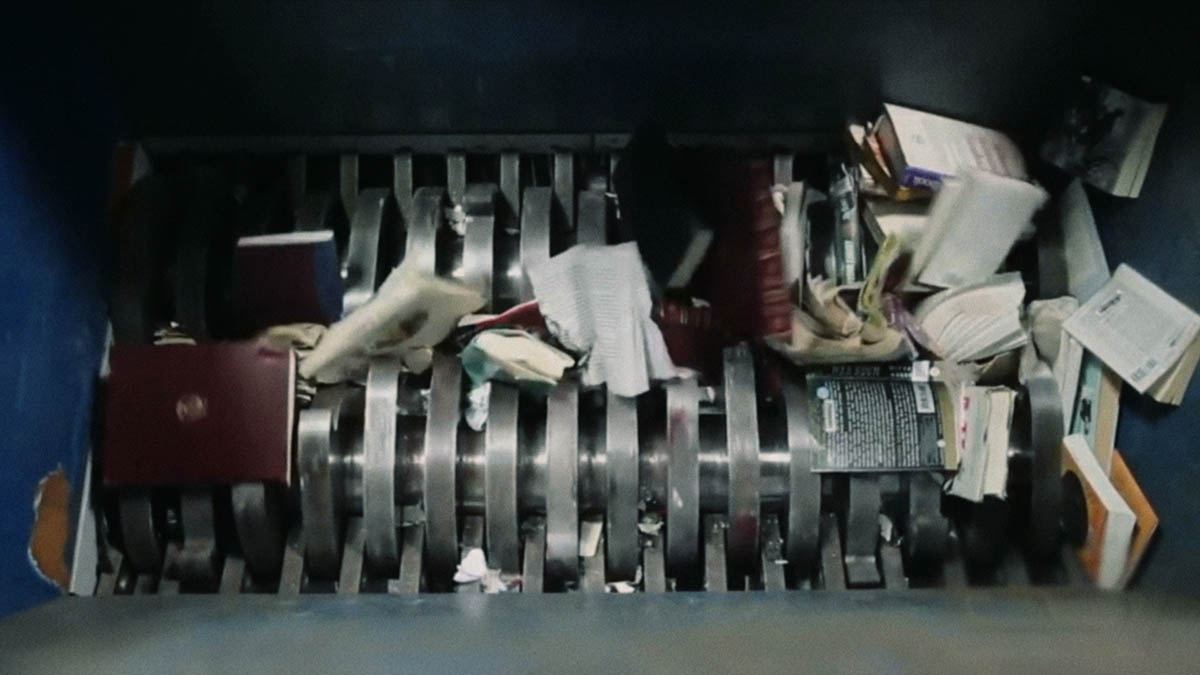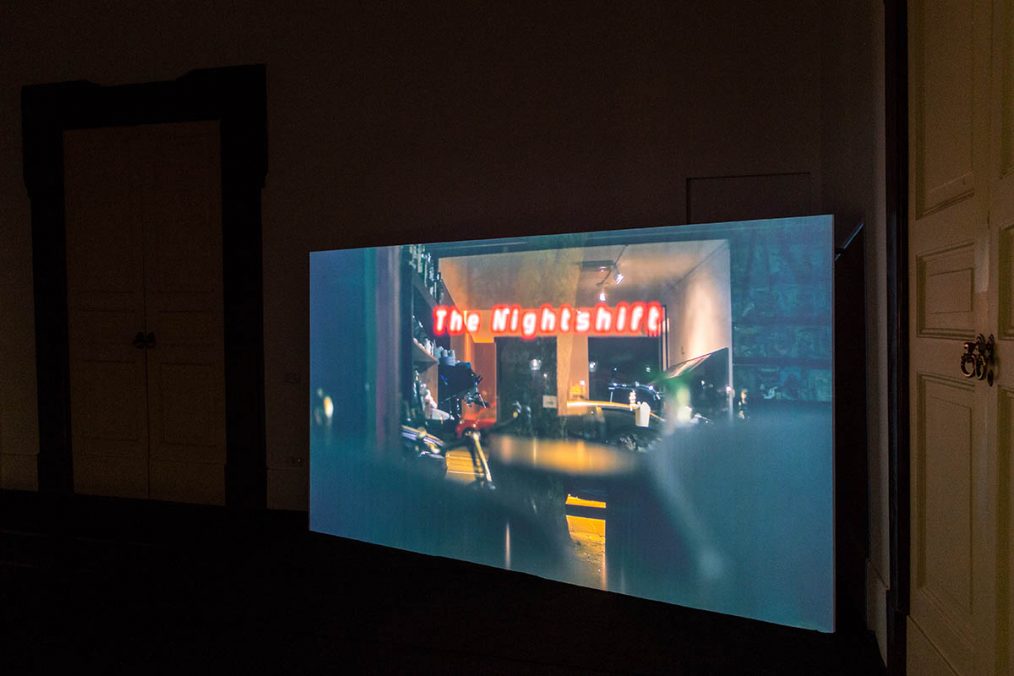
Who are the curators that you are working with, and which background do they have?
I work a lot with curators that have the same education as mine, which means art historians. For example, Giacomo Zaza. He was with me at the university. We grew up together, plus we share most of our ideas about art. Antonello Tolve, a scholar more than a curator (she is directing the Roman headquarter of the Fondazione Menna – Binga where they take care of Tomaso Binga’s archive). Next, I share a lot of ideas with Irina Zucca Alessandrelli from Milano. Her approach is very similar to mine. Recently here in Napoli, I have started a conversation with Alessandra Troncone, who teaches at the Academy of Fine Art and introduced me to Oscar Santillan’s work. She will curate his show here. Then Marc Bembekoff, based in France, who curated Damir Ocko’s exhibition at Palais de Tokyo. He then suggested that I visit Maxime Rossi, with whom I started to work in 2012 and who I work with even now. Branka Bencic who follows Damir Ocko’s work is always very close to the gallery, but even Vasco Forconi, a very young and talented human. It’s always a pleasure to collaborate with Ilaria Gianni, Marcello Smarrelli, Arianna Rosica, Francesca Lacatena, Paola Ugolini.
Giacomo Zaza; Antonello Tolve; Irina Zucca Alessandrelli; Alessandra Troncone, Marc Bembekoff, Branka Bencic, Vasco Forconi, Ilaria Gianni, Marcello Smarrelli, Arianna Rosica, Francesca Lacatena, Paola Ugolini.
Do you also curate shows of the gallery?
Yes I do. When the gallery celebrated its 10th anniversary I conceived a show called Every Love Story Is A Ghost Story, consisting in the collection of works by some of the artists that I have always regarded as a reference. Those who have drawn my attention to specific artistic dynamics and that represent constant presences in my taste choices, both for the poetic and experimental nature of their works, and for the „militant“ attitude of their research. The titled was an appropriation by David Foster Wallace. But in general Tiziana Di Caro is not the kind of gallery where you can find easily salable artworks. Every show, even if solo shows, are always curated and they include even videos, big installations more often site specific works, which mean that each show provides for a specific curatorial vision.
The group exhibition PARABASIS lasted from 01/02/2020 – 04/06/2020. Was this prolonged time due to Covid-19 pandemic?
Parabasis was extended because of the Covid-19. The gallery was closed for three months, and the program failed. Tomaso Binga‘ solo show, which is now on, was scheduled for March 2020. In May, we should have done the first solo show in our gallery by Oscar Santillan. This exhibition would involve an effort in terms of production, and so it was impossible to contemplate something in a moment that is so uncertain. The only solution for these uncertain times is to focus on the artists of our territory. They need us, and we need them. I mean… we need all the artists we represent, but we also have to be careful and try to do the best, managing our possibilities.
The only solution for these uncertain times is to focus on the artists of our territory. They need us, and we need them. I mean… we need all the artists we represent, but we also have to be careful and try to do the best, managing our possibilities.
How it felt to host such a long-lasting exhibition?
It is always beautiful to deal with artworks in your space, but to change exhibition means to proceed following a flow of intellectual and emotional exchanges; necessary for a gallery owner. I love to be a gallerist because it is a super dynamic work. Now that it is not, everything is quite frustrating.
It is always beautiful to deal with artworks in your space, but to change exhibition means to proceed following a flow of intellectual and emotional exchanges; necessary for a gallery owner

Do you think that the pandemic will introduce new habits in the way the galleries organize their work, for example length of exhibition?
I think as soon as the moment will be better, all the gallerists who can continue to work, will return to old habits according to their possibilities. We live of the work and the collaboration with artists, the more artists we can work and stay with, the better we feel.
Can you tell us how openings and crowds have changed, taking as an instance the opening of the exhibition „„La metafora dell’arciere“?
We couldn’t do a proper opening because gatherings are prohibited, so we invited collectors and closer friends a day before the opening reception, and the opening reception took place the whole day, from 11:00 am until 7:00 pm, and most of the visitors had booked their visits. All this is totally different from having a two/ three hours opening during which you receive even more than 100 visitors.
When observing the gallery’s website, one can immediately recognize that the archive is essential for you. One can see exhibitions view from the very first show of the gallery (2008) and read the respective curatorial texts. Have you ever thought to add to your website online viewing rooms? What is your attitude toward these shifts that were accelerated as a consequence of the pandemic?
We work a lot on our archive, and we always work to have it updated. I tested online viewing rooms, but they don’t work for me. I do not exclude that our website is an online interface of the work we do at the gallery, but I do consider it a promotional tool and even an information and dissemination tool, but rather than a proper instrument to understand closely what our artists and we do.
On the other side, they are also art galleries that have created webshops, although in most of the cases one could only send an inquiry and not buy directly. What is the reason behind it?
To buy an artwork needs a lot of passages that you can not manage through e-commerce.
How was the beginning of the pandemic in terms of work for you? With what things were you dealing? Were you able to make sales?
During the lockdown, I have worked on our inventory and few other things that are difficult to do when preparing exhibitions, fairs, logistics, and other even more urgent things. Then I’ve tried not to think about what was happening to the world. I’ve tried to think about the gallery because it was too frustrating. I made very few sales, and I must admit that the situation was more than critical. I sold to people who know me very well. I’ve been reached from new clients, this is true, but with no sales.

What do you think of the boom of online art fairs, which has occurred since march?
Online fairs are very difficult. Since now I have been contacted mainly by people who already knew the gallery. I am sorry to say this, but I must admit this won’t work, above all for me: I do research, and the artists I represent have demanding works. Seeing and understanding them online, even though the best of the platforms, will not work.
How important are fairs for the operations of an art gallery?
They are very important because through fairs we have the chance to meet „new“ people. Plus, unfortunately, collectors take advantage of the art fairs to meet gallerists and artists. I think this is a mistake, because for me, you can understand the attitude of a gallery by visiting this. Now the trend is to go to fairs, because it is easier then going to galleries. People prefer to see booths instead of exhibitions. Which, for me, is a paradox.
I think this is a mistake, because for me, you can understand the attitude of a gallery by visiting this. Now the trend is to go to fairs, because it is easier then going to galleries. People prefer to see booths instead of exhibitions. Which, for me, is a paradox
How are artists doing since the pandemic?
They are all closed in their studios working. In one year or maybe two, we will all enjoy the art of the pandemic.
What are you looking forward for the future?
I look forward doing the vaccine.
Please tell us an extravagant, romantic or ideal day of yours in Naples.
Early in the morning, I would have a long walk in the Bosco di Capodimonte. Then breakfast at Capodimonte caffè. After that, I would do a visit to the homonym museum. Than the Museo Capodimonte. Afterward, I would walk down to Quartiere Sanità along the Salita Moiariello, to stop at Catacombe di San Gennaro. A walk through the Centro Storico will wonderfully end my day.
Upcoming exhibition: Teresa Gargiulo, Come disegnare un’isola (How to draw an island). Opening: 16.01.2021
Address and Contact:
Gallery Tiziana Di Caro
Piazzetta Nilo, 7, 80134 Napoli NA, Italia
www.tizianadicaro.it
About the Interviewer: Erka Shalari (*1988, Tirana) is a Vienna-based art author. She focuses on discovering independent young and emerging artists, unconventional exhibition spaces, and galleries that have deliberately broken new ground in their working methods. In this regard, she relies on unorthodox publishing practices, coupling these with a nonchalant manner of writing. The work oscillates between articles for magazines, exhibition texts and press releases.





